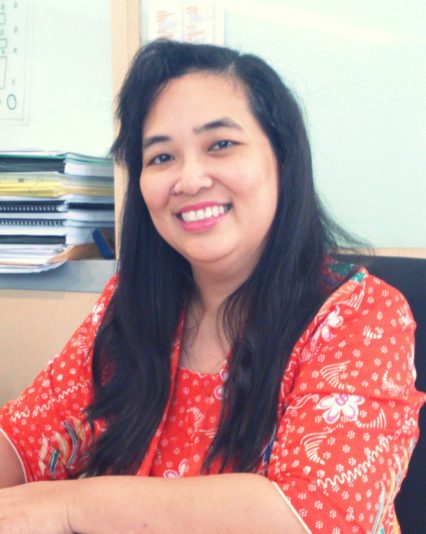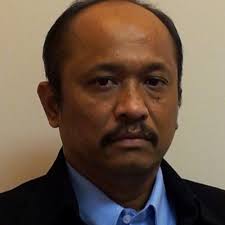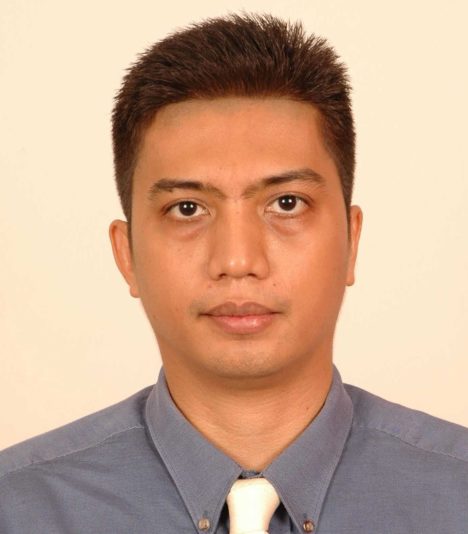Case Document
PT JAMSOSTEK INDONESIA : RISK MANAGEMENT
It’s been 7 years since 2004, but Law proposition (Rancangan Undang-Undang) about Badan Penyelenggara Jaminan Sosial (BPJS) had not yet been completed. This bill was a mandate from UU No. 40/2004 about Sistem Jaminan Sosial Nasional (SJSN), ratified by (former) President Megawati Soekarnoputri. If the law proposition about BPJS was completed, this would become a holding institution that administered four state-owned insurances, which consisted of health insurances, safety insurances, pension insurances and life insurances.
This settlement was collided with oppositions based on the legal entity form of BPJS, whether these four BUMN insurances: PT Jamsostek, PT Asuransi Kesehatan Indonesia, PT Asuransi Sosial Angkatan Bersenjata Republik Indonesia and PT Dana Tabungan dan Asuransi Pegawai Negeri would be merged. In one hand, the constraint in terms of legislation was the unfinished harmonization of several regulations such as UU No. 3/1992 about Jamsostek and UU No. 11/1992 about Pension Fund. Pension Fund was still voluntary and not mandatory. Some laws were still overlapping and burdensome to employers. On the other hand, not all companies provided pension insurances for employees and solely relied on Jamsostek.
On October 2010, PT Jamsostek resisted the merger of four State-Owned Enterprise (BUMN) insurances into one Badan Penyelenggara Jaminan Sosial (BPJS). Four BUMN insurances had differences from characteristics of participants, programs, and most importantly was the difference in how each company covered risk exposures such as market risk and liquidity risk.
SCHRODER INDONESIA : HOW TO OUTPERFORM THE INDEX
Since 2005, PT. Schroder Investment Management Indonesia was the biggest mutual funds investment company in Indonesia with a total fund of Rp 26 trillion. However, when the crisis happened in the end of 2008, the funds dropped to Rp 20 trillion. Less than a year later, in March 2009, two of Schroder products, Schroder Dana Prestasi Plus (equity mutual funds) and Schroder Dana Prestasi (mixed mutual funds) were chosen as the best mutual funds for category 3 years, 5 years and the latter for 7 years.
The company strived to manage funds to the amount of, Rp 26 trillion in 2005. Moreover, the company aimed to outperform the index, which also meant outperforming the benchmark performance.
CARREFOUR INDONESIA: GROWTH VIA ALFA ACQUISITION
To increase market share and strengthen its position as a market leader in modern retailing, PT Carrefour Indonesia acquired a 75% (Rp 647 billion/US$87 million) stake in PT Alfa Retailindo from PT Sigmantara Alfindo and Prime Horizon in January 2008. The acquisition gave the company the right to operate all 29 supermarkets of the AlfaMidi chain, a public company with a market capitalization of about US$ 108 million, had more than 11,000 employees. Following the acquisition, Carrefour renamed the Alfa supermarket outlets to Carrefour and Carrefour Express and generated Rp 9.2 trillion in revenues: Rp 7.2 trillion from Carrefour and Rp 2 trillion from Alfa.
The Indonesia Retailers’ Association (APRINDO-Asosiasi Peritel Indonesia) predicted that Carrefour will dominate the national retail market in Indonesia. About a year after, the Business Competition Supervisory Commission (KPPU-Komisi Pengawas Persaingan Usaha) conducted an initial investigation process of Carrefour's business expansion and in November 2009, KPPU declared that PT Carrefour Indonesia was proven legally and convincingly to have violated Article 17 Paragraph 1 and Article 25 Paragraph 1(a) of Law No. 5/1999 on the prohibition of monopolistic and unfair business competition. KPPU ordered Carrefour to release all the stakes of PT Alfa Retailindo Tbk to parties not affiliated with PT Carrefour Indonesia no later than one year after this decision and to pay a fine of Rp 25 billion.
To challenge this verdict, PT Carrefour Indonesia filed a civil case at the South Jakarta District Court, which decided to cancel all KPPU decisions related to PT Carrefour Indonesia in February 2010. The company was free from the divestment order and fines.
One of the main reasons used by PT Carrefour Indonesia to win in the Court was the definition of retail market and the results of market data researches.
This case provides students an opportunity to discuss and analyze their understanding about economic information in decision-making, market structure systems, and monopolistic issues, as well as to discuss corporate growth strategies. This enables students to be aware of contemporary issues in business restructuring and corporate actions, particularly recent corporate mergers and acquisitions in Indonesia.
The class session would be lively if the instructor uses the debate and open forum format. Role-play would be another method that could be used to discover the assumptions and perspectives of each actor (i.e., KKPU, Carrefour, Alfa and government, competitors, etc).
PT INDOSAT: PRICING OF BONDS
Early in 2010, the Finance Director of PT Indosat Tbk, considered an empirical investigation of several theoretical pricing restrictions that should be satisfied by nine bonds of PT Indosat TbK. In particular, he wanted to investigate pricing volatility for bonds that were issued in 2002, 2003, 2005, 2007, 2008 and 2009.
Refinancing could be in dollar-denominated bonds, rupiah-denominated bonds, syaria-denominated bonds and bank loans. The market appreciated bonds issued by companies with AA+ Ratings. Comparing current macroeconomic circumstances to inflation and volatile interest rate, newly-issued bonds face challenges such as price, yield, and bond maturity period.
IPO KRAKATAU STEEL
PT Krakatau Steel Tbk, one of the strategic state-owned enterprises, initiated its public offering on 10 November 2010. Only several minutes after its opening, the price rocketed to Rp 1,270 from the initial price of Rp 850. This stopped because of the auto-rejection mechanism on the trading floor. The market capitalization reached Rp 20.03 trillion, the biggest capitalization for the IPO company. The initial price reflected severe underpricing; the price on the black market reached Rp 1,500 compared to the official Rp 850.
The allocation of the stocks was also intriguing because it was suspected that the allocation mostly favored foreign instead of domestic investors. A citizen lawsuit was opened to cancel the Krakatau Steel IPO.
This case study highlights the IPO of Krakatau Steel from the capital structure’s point of view, using EPS and EBIT curve.
BANK BTN: TRANSFORMING BUSINESS THROUGH BSC AND IPO
Bank BTN’s Management has initiated to transform the bank into world class financial institution. Two strategic moves have been taken by Bank BTN; which are implementing Balance Score Card (BSC) and going public (IPO). The Bank started to develop BSC on November 2008. A year after that (on November 19, 2009), Bank BTN listed in Bursa Efek Indonesia with IPO’s price of Rp. 800 per share. The IPO has been an accomplishment as the price of Bank BTN’s share has jumped up to Rp. 1.870 per share (October 5, 2010); an increases of 134%. These two strategic business moves are expected to have long term impact to sustainability of the organization as the management aims for becoming world class bank in 2018.
DEBT RESTRUCTURING OF PT CIPUTRA DEVELOPMENT TBK
PT Ciputra Development Tbk was one of the leading property companies in Indonesia. Their property projects were built in several major cities and had a well-known reputation. Two of its subsidiaries were also listed on the Stock Exchange Indonesia, PT Ciputra Surya Tbk and PT Ciputra Property Tbk.
PT Ciputra Development Tbk had total assets of Rp. 9 trillion at the end of September 2010 increased from Rp. 5.3 trillion at the end of 2005. Equity also increased from a negative Rp. 96 billion at the end of 2005 to Rp. 4.78 trillion in late September 2010. On the other hand, the company held cash and cash equivalents Rp. 2.133 trillion, bank loans Rp. 210 billion to various banks, and customer advances was Rp. 1.341 trillion in the end September 2010. The customer advances was Rp. 1.341 trillion as of end September 2010. That is, companies did a very significant progress in the last six years.
However, this was not always the case. On the severe financial crisis on 1997, the company suffered very much from huger losses, mostly because of the foreign exchange debt. The foreign currency debt reached nearly U.S. $ 200 million. With the exchange rate reached Rp 16.000 per dollar, it made the company shuffled. Payable in foreign currencies were very large and negative equity made the company should take action to survive.
PT BAKRIE AND BROTHERS TBK.: THE COST OF CAPITAL
As one of the major investment companies in Indonesia, PT Bakrie & Brothers Tbk (called BB) is considering a major expansion of the business, growth through internal investment (organic), or invests by acquiring other companies (inorganic). From the firm's perspective, the investors' expected return is a cost of using the funds, called the cost of capital. A variety of factors influencing a firm's cost of capital, such as level of interest rates, tax policies, and the regulatory environments. The degree of risk in the projects it undertakes and the types of funds it raises both have a profound effect on its cost of capital.
CRUDE PALM OIL AFTER CRISIS 2008
On Asian crisis 1998, the palm owner and businessman still could face the crisis smugly. The base price of crude palm oil (CPO) for one fresh stem of oil palm (tandan buah segar) was USD 600 per ton, but with the exchange rate of Rp 16.000 per 1 USD, the producers were quite blessed from the crisis condition. With the average area owneship was at minimum 2,5 hectare each farmers with the output of 2 tons per hectare crude palm oil, the farmers gained at least USD 12.000 (2,5 hectare x 2 tons x USD 600).
The reason was the demand of CPO was still high. Even in China, although it was in Asian region, its economic was growing. It happened also in India. In Europe, countries like Germany and Netherlands were consumers of crude palm oil originated from Indonesia and Malaysia. It was very much affected positively the farmers and the local economic.
A very different story came up on crisis on September 2008. The price of CPO declined and so was the demand. The producers were on the edge of the egg. A lot of TBS were left unharvested by the farmers because the price went down to Rp 300 per kg from Rp 1.200-1.400. Big players in Indonesia and Malaysia were oversupplied. The firms were to hold on their expansion or to hold the planting.
The crude palm oil was now a disaster. If before it was a green gold, now it was a dead card. Victims were tumbling down. Now, could the price shine again on the next year? A lot of people depended on bio fuel programs in most countries as an anchor price. It that was the case, the CPO price would be better. The problem was the oil price was on the bullish and made the bio fuel was more expensive than the fuel.
Now the case questions were what the producers should do? What government should do? What were the real threats on this business? How could we control the prices? How could we adjust with macroeconomics environment? If Indonesia had a comparative advantage for area of plantation, would it be still comparative advantage or became big liabilities? Why Indonesia did not start to develop the downstream crude palm oil industry?
CENTRAL PROTEIN PRIMA: SHRIMP BUSINESS
As Gunawan Taslim, Director of PT Central Protein Prima, flew from Jakarta to Lampung in June 2009, he thought about the decision he must soon make on CP Prima’s strategic action to some problems from declining orders affected by global crisis, rejection from US Custom for their 37 containers contained frozen shrimp product, accusation from Shrimp Club Indonesia (SCI) that the company would re-sell the rejected product into domestic market while the frozen shrimp product should be exported to overseas market, to a failure of shrimp harvest caused by virus disease. He was due to attend a meeting with Board of Commissioners in early July 2009. Gunawan thought, “The good news is the sales increased almost 39% in the last September comparing to last year. The bad news is we still can not find the market to re-sell our rejected 37 containers from US Custom.”
This was a critical decision for Gunawan and CP Prima. An increasing leverage and rupiah depreciation caused by global crisis would affect cash flow position. The declining cash flow position could lead a default on debt covenant. The default could lead a declining rating on CP Prima obligation position.






